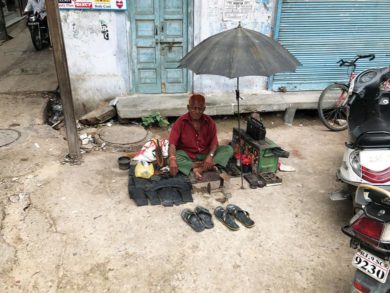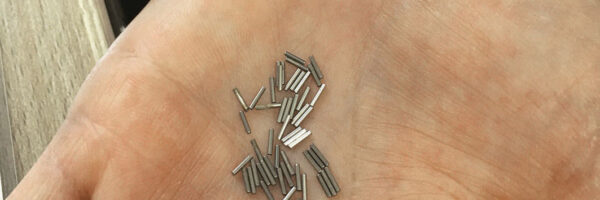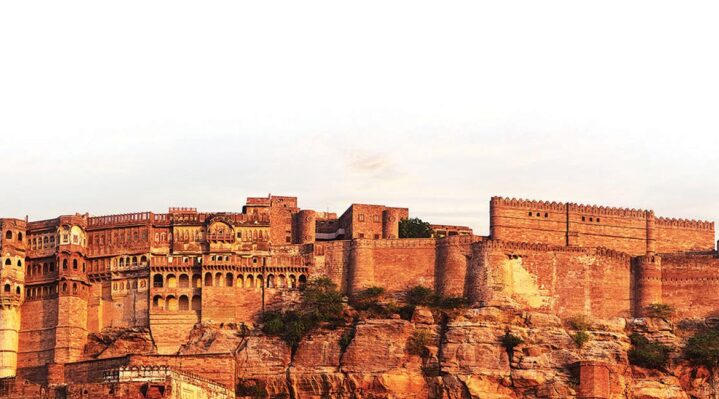
The Royal Palaces of Rajasthan
Although there are royal residences all over the north western state of Rajasthan I centred myself in Jodhpur, the second largest city in the state popularly known as the Blue City. The name is clearly befitting as many of the houses in the old city are shades of vivid blue. This is particularly noticeable on the north side of the town, known as Brahmpuri for the many Brahmins that live there. Blue apparently repels the mosquitoes.
It is located 535kms (roughly 5 hours by car) from Jaipur, 200kms from the city of Ajmer, 300kms from the Pakistan border and 1.5 hours by air from Mumbai. It was formerly the seat of the princely state of the same name, the capital of the kingdom known as Marwar. Jodhpur is a popular tourist destination, featuring many palaces, forts and temples set in the stark landscape of the Thar desert.
The climate of Jodhpur is generally hot and semi arid, but with a rainy season from late June to September when I went. Temperatures are extreme throughout the period March to October except when the monsoon rains produce thick clouds to lower it slightly. In the months of April, May and June, high temperatures routinely exceed 40/45C making it uncomfortable. However the city’s generally low humidity rises and this adds to the normal discomfort from the heat.
The city is also known as the “Sun City” from the bright sunny weather it enjoys all year round. The main attraction in the city is the 15th century Mehrangarh Fort which is a former palace that’s now a museum, displaying weapons, paintings and elaborate royal palanquins (sedan chairs). The old city circles the fort and is bounded by a wall with several gates. Rising perpendicular and impregnable from a hill which is 125 metres above Jodhpur’s skyline this historic fort is one of the most famous in India and is packed with history and legends. It still bears the imprints of cannonball attacks courtesy the armies of Jaipur on its second gate. Chiselled and sturdy, the fort is known for its exquisite latticed windows, carved panels, intricately decorated windows and walls of Moti Mahal, Phool Mahal and Sheesh Mahal. The city has expanded greatly outside the wall over the recent past.
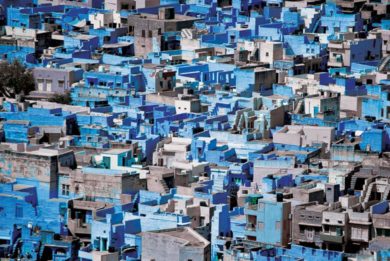
I visited the fort and spent 2 hours wandering round admiring the views across the city and countryside and the intricate architecture within its walls.
Jodhpur lies near the geographic centre of the Rajasthan state making it a convenient base for travel in a region much frequented by tourists.
I based myself at the Vivanta by Taj Mari Hari, which was an excellent choice as the venue was opulent and very comfortable, the standards of hospitality and service offered by the General Manager Mr Vijay and his staff were first class, beyond expectations. The intricately carved arches and delicate jharokhas transported me to a different era and the hotel was so large that in most areas I went I was alone
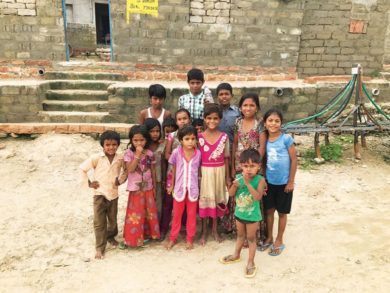
The staff in all departments were polite, genial and could not do enough to make my stay pleasant. The building originally built in 1922 for the Maharaja Hari Singh had long corridors of marble with high ceilings which were tastefully decorated with art, sculptures and flowers. The hotel has 90 rooms and 3 suites and was very comfortable and provided an oasis and sanctuary to me in the urban jungle of Jodhpur city with its sights, smells and chaos on the dusty, dirty streets.
I can highly recommend this hotel and will return myself to experience the excellent service standards of Tajness as Mr Vijay named it.
One of the reasons I relished my visit to Jodhpur is that it is because it’s a wanderer and a photographer’s paradise. The colours, textures, the architecture and the people are just some of the many reasons why it is a photo opportunity on every corner. I swear even the way that people languidly sit on their front steps is better than any professional model can pose. Women sweeping the roads and the trash wearing colourful saris to me just looks stunning.
At times, it feels like you are driving through a Hollywood set while you sit cocooned in the hotel car driving through the crowded streets, horns blaring to avoid hitting cows, dogs, and street vendors. Motorbikes everywhere, it’s a cacophony of sounds, smells and chaos, but somehow it all works. The roads are in an appalling state as the rains have created potholes and washed away the surfaces.
Umaid Bhawan Palace is another impressive landmark for the city and is the current home of The residence of Maharaja Gaj Singh II. It was built by his grandfather Maharaja Umaid Singh in 1929 to counter a famine which had hit the state at the time. It was also known as the Chittar Palace while being constructed thanks to the use of stones drawn from the Chittar Hill. The palace was designed by HV Lanchester, a renowned British architect, and was completed in 16 years. Built with sandstone and marble, the architecture of the palace is described as a blend of lndo-Saracenic, classical revival and Western art deco styles. It is recognised as one of the largest private homes in the world and also one of the more spectacular buildings. It is the only palace built in the 20th century.
However all around the state there are royal palaces that you can visit and even stay in. I was invited to stay in a fort called Rohet Garh about 40kms from Jodhpur city centre. Totally anonymous you would never know it was there if you were not delivered or collected. Rohet Garh is a 29 bedroom boutique hotel based in Rohet village some 40kms from the centre of Jodhpur.
The owners of Rohet Garh also own and operate Mihir Garh, the Fort of the Sun out in the desert perhaps 40 minutes or so from Rohet Village. This is a luxury resort hidden away far from the madding crowds with just 9 magnificent suites. I hope to get invited to stay there next time I visit Rajasthan to experience the solitude and unrivalled luxury that the resort offers.
There are 3/4 main seasons in Rajasthan summer which is so scorchingly hot that they close for 2 months in June and July, the rainy season which starts late July and runs to September and winter which I am told is warm sunshine during the day but the nights can get down to as low as 7C.
It was my first real foray into rural India but I loved it and I cannot wait to return to explore more. To meet the people and experience the sights, smells, sounds – a feast for the senses.
